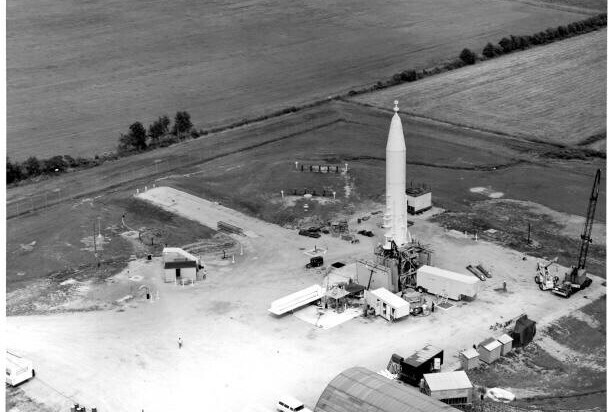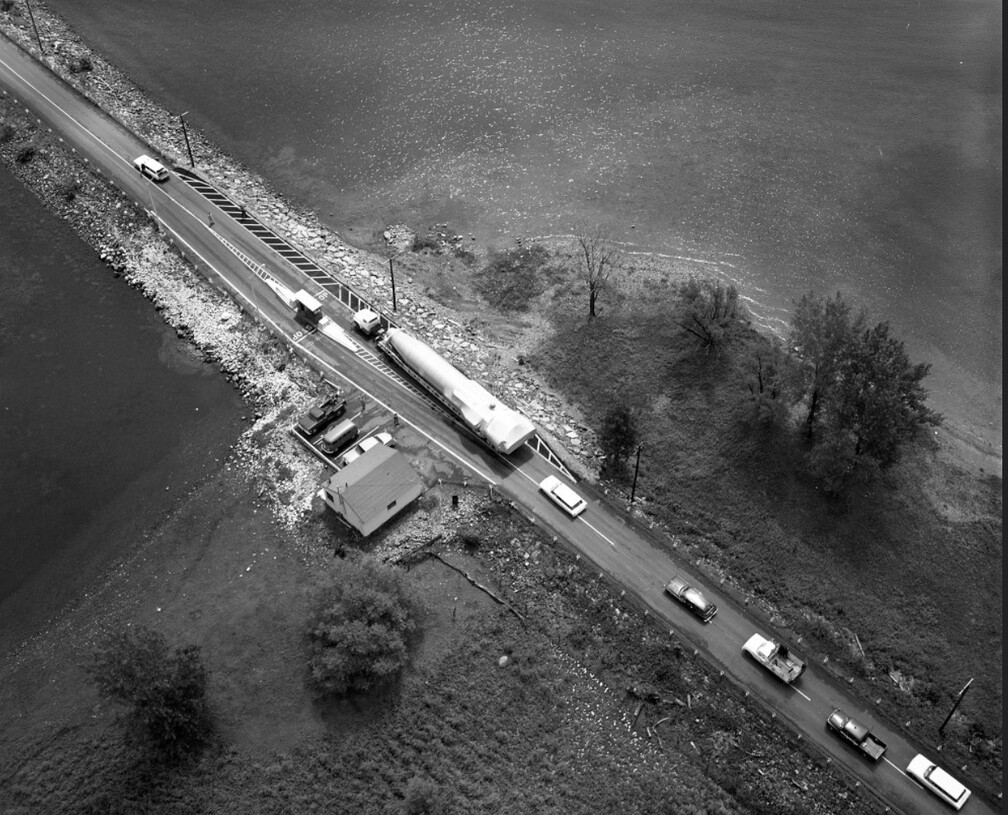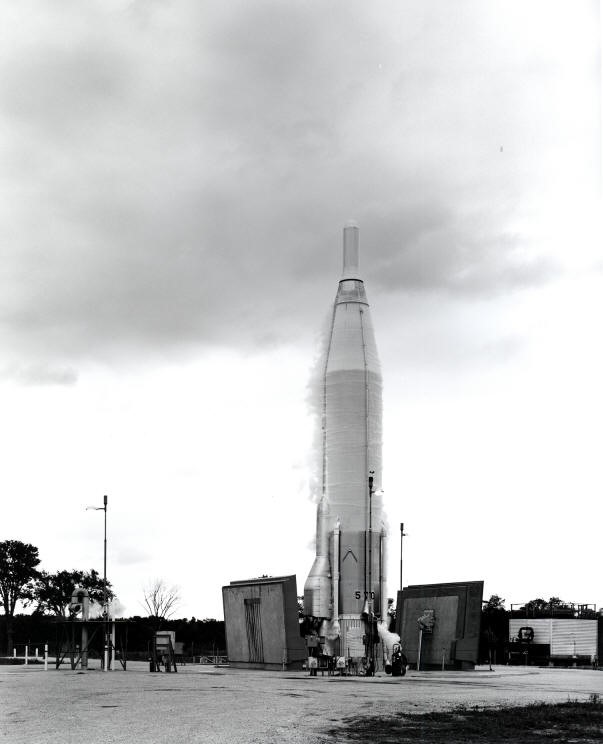Vermont on the Cold War's Front Lines

In the fall of 1962, the world reached the closest point to the start of a nuclear war that it has ever experienced: the Cuban Missile Crisis. The confrontation between the United States and Soviet Union was the product of an escalating strategy of deterrence and for many was a confirmation of the dangers that nuclear weapons posed to the world at large. While the incident took place in the middle of the Caribbean, Vermont and upstate New York had their own roles to play.
When the U.S. dropped a pair of nuclear bombs on Japan in August1945, it brought the Second World War to a close but ushered in a new era of warfare at the same time. In the years that followed, the U.S. and U.S.S.R established networks of intercontinental ballistic missile launch sites in a tit-for-tat game of deterrence. If one launched a missile, the other could respond in kind. This strategy of mutually-assured destruction (MAD) was theoretically designed to hold the other in check, because the consequences of such a conflict would be too destructive.
Vermont and upstate New York were part of that strategic network. Once the site of British invasion during the War of 1812, Plattsburg, New York became the home to a sprawling military base that quartered and trained soldiers through the wars that followed. As tensions rose in the aftermath of the Second World War, the U.S. Air Force took over the base and repurposed for use as a hub for a number of strategic bombing units. With the introduction of Intercontinental Ballistic Missiles (ICBMs) to the country’s arsenal, the Air Force designated Plattsburgh as one of four installations to house the new SM-65 Atlas missile, which could deliver a nuclear warhead anywhere in the world.

The base was the focal point in a ring of twelve missile silos dug into the ground in New York (Ellenburg, Mooers, Champlain, Brainardville, Dannemora, Redford, Riverview, Au Sable, Lewis, and Willsboro) and Vermont (Alburg and Swanton). Each silo extended deep into the Earth and included a control room from which a crew would oversee the missile and its operations. When ordered, the crew would fuel the missile and run through checklists to confirm its readiness, then raise it to the surface, where they’d wait for confirmation to launch the vehicle into the sky.
That moment almost came in 1962. To undercut the US’s arsenal, USSR Premiere Nikita Khrushchev ordered the secret deployment of dozens of short-range missiles to Cuba, where they could strike at much of North America. When an American spy plane discovered the arrival of the missiles in Cuba on October 14th, it prompted President John F. Kennedy to order a naval blockade of the island nation and to raise the US readiness level to DEFCON 3 on October 22nd.
Construction on Plattsburgh’s missile silos had largely been wrapped up by the spring of 1962: members of the 556th Strategic Missile Squadron had been assigned to the base and begun training and drilling. In April, the base took delivery of the first Atlas F missile followed by more in July. According to John Stone and Jeff Stephens in their book History of the 556th Strategic Missile Squadron, the Swanton silo was the first to undergo a Propellant Loading Exercise on September 13th, 1962, which “would have been the earliest of ANY missile from the 556th SMS that would have been capable and ready to launch,” they write. “By the end of the month 10 missiles had been received by the squadron.”

With Kennedy’s quarantine and alert order on October 22nd, the Swanton and Ellenburg silos were the first to be ready and go onto alert status. On the 24th, the military moved to DEFCON 2 status, and two more sites, Alburg and Willsboro went into alert status. “There was an unusual bee hive of activity on the top side of [Alburgh],” recounted Master Sergeant (retired) Harold “Don” Wamsley in History of the 556th Strategic Missile Squadron, “The crew commander was very busy on one of the phones. He reached into a large bag he always carried, and handed me a pistol with holster and belt. I was told to put them on, and then go into the silo and ‘guard’ the guidance control console until I was relieved.” He remained there until he was relieved when a targeting team arrived at the silo and a warhead was installed.
The tension caused by the geopolitical crisis was palpable elsewhere in Vermont. On the 23rd, the St. Albans Daily Messenger reported that the area was a “flurry of activity” following Kennedy’s announcement of the quarantine, with a number of jets landing at the Burlington, explained by one unnamed member of the Vermont National Guard that they were part of a Strategic Air Command maneuver.
Meanwhile in Montpelier, two members from the 556th Strategic Missile Squadron helped explain the tense situation to Vermonters. According to the Times-Argus of Montpelier and Barre on the same day, Captain William Bernstein and Master Sergeant James Marshbourne flew by helicopter to meet with members of the Montpelier Rotary. In their presentation, they explained that the Plattsburgh base was “the only missile base in the east,” and reassured them that “none of these missiles could be fired accidentally.” Bernstein touted the abilities of the missile crews, showed off a model of the Atlas missile, and explained its launch procedures to the crowd.
The Cuban Missile Crisis came to an end on October 29th, when the USSR announced it would pull back its missiles, and the US removed batteries of shorter-range missiles from Turkey. The missiles in the north country would remain for another three years: the Atlas class of missiles were eventually surpassed by more efficient ICBMs, and with their departure, the missile silos of New York and Vermont were shut down.
The missiles they once carried did end up serving a useful purpose: brought to California, they were eventually used to test equipment for the space program. Their presence demonstrated the reach of the Cold War and the US’s nuclear strategy and served as a vivid reminder that nuclear warfare was not a far-off concept.
This article was originally published in our member magazine, History Connections. To see it and other past issues, visit our Newsletter page. You can get History Connections by becoming a member of the Vermont Historical Society.
